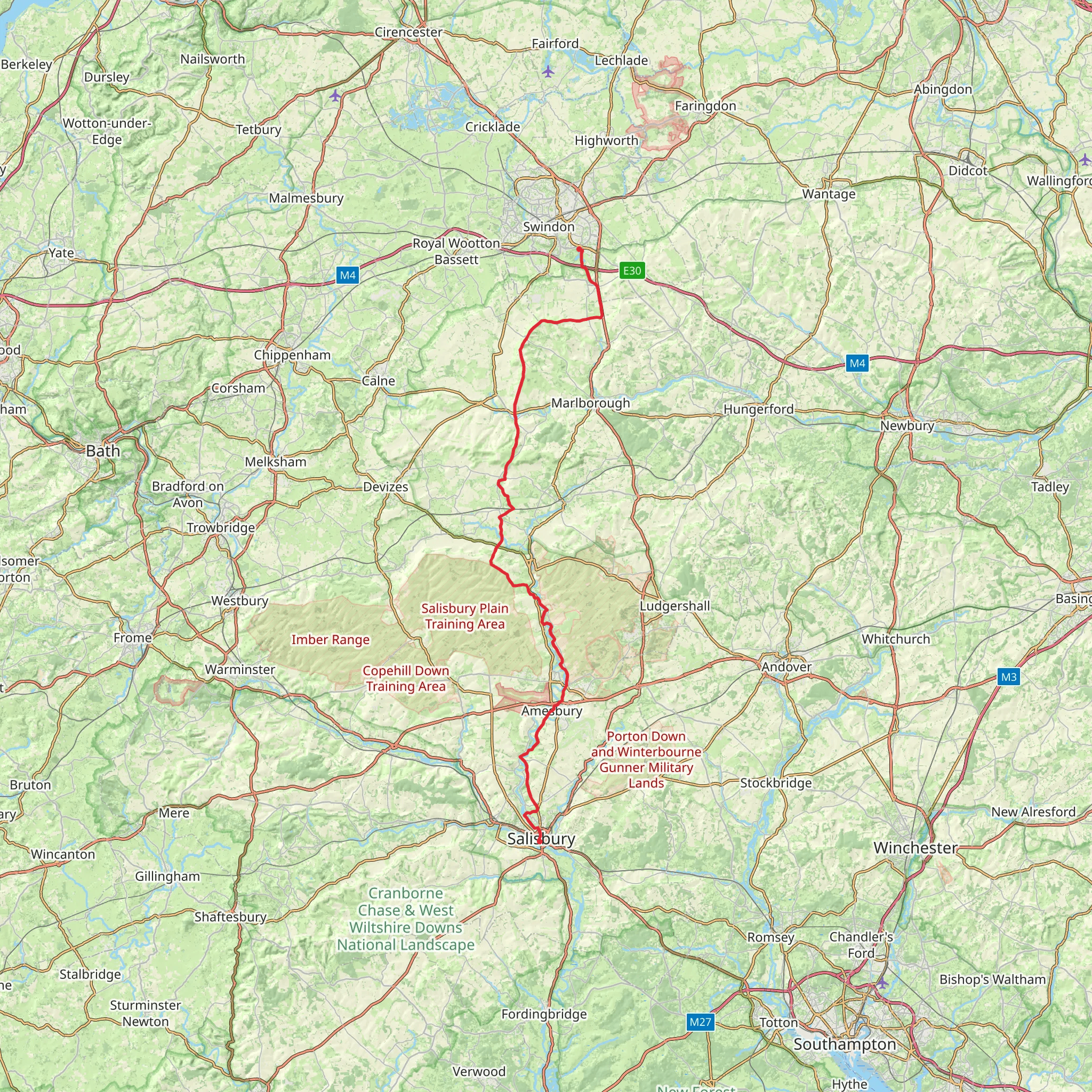Download
Preview
Add to list
More
76.8 km
~4 days
1034 m
Multi-Day
“Embark on the Great Stones Way, a historic and picturesque English countryside trek through time and nature.”
Embarking on the Great Stones Way, you'll traverse a scenic 77 km (approximately 48 miles) stretch of English countryside, with an elevation gain of around 1000 meters (3280 feet). This point-to-point trail begins near Swindon, England, and is considered to have a medium difficulty rating.
Getting to the Trailhead
To reach the starting point of the Great Stones Way, you can drive or use public transport. If driving, the trailhead is accessible via the A346, with parking available in the nearby town of Coate. For those preferring public transport, Swindon's train station is well-connected, and from there, local buses can take you closer to the trailhead.
The Journey Through History and Nature
As you set out from the vicinity of Swindon, the trail quickly immerses you in the rich tapestry of Wiltshire's landscape. The path meanders through rolling hills, verdant fields, and alongside tranquil river valleys. Early on, you'll encounter the Coate Water Country Park, a delightful spot to appreciate local wildlife and the serene lake.
Continuing south, the Great Stones Way offers a journey not only through nature but also through time. The trail is a celebration of Neolithic and Bronze Age Britain, with the ancient Ridgeway path forming a segment of the route. This old trackway has been traveled for over 5,000 years and is often referred to as Britain's oldest road.
Landmarks and Historical Significance
One of the most significant landmarks you'll encounter is the Avebury World Heritage Site, approximately 32 km (20 miles) into the hike. Here, you can explore the largest stone circle in Europe, which predates Stonehenge. The mysterious stones and nearby Silbury Hill, the largest man-made mound in Europe, offer a glimpse into the area's prehistoric past.
As you progress, the trail provides views of the iconic Stonehenge, around 64 km (40 miles) from the start. While the trail does not pass directly by Stonehenge, its presence on the horizon is a reminder of the region's historical importance.
Flora and Fauna
The Great Stones Way is a haven for wildlife enthusiasts. The chalk grasslands support a variety of wildflowers and butterflies, particularly in the summer months. Birdwatchers may spot skylarks, buzzards, and red kites soaring above. The trail also passes through several nature reserves, where careful observers may catch glimpses of deer and other native wildlife.
Navigation and Preparation
To navigate the trail, HiiKER is an excellent tool for planning your journey, offering detailed maps and waypoints. Be sure to download the necessary maps for offline use, as some sections of the trail may have limited mobile reception.
Preparation is key for this multi-day hike. Pack appropriate clothing for changeable weather, and consider the time of year, as conditions can significantly affect the trail experience. Water sources are available in the towns and villages along the route, but carrying sufficient water and a means of purification is advisable.
Accommodation and Amenities
The trail passes through several small villages and towns where you can find accommodation, ranging from campsites to bed and breakfasts. It's wise to book in advance, especially during peak seasons. These settlements also offer opportunities to resupply and enjoy local cuisine, allowing you to experience the hospitality of Wiltshire's communities.
Conclusion
The Great Stones Way is more than just a hike; it's a journey through the heart of ancient Britain. With its combination of natural beauty and historical wonders, it offers an unforgettable experience for those who tread its path.
What to expect?
Activity types
Comments and Reviews
User comments, reviews and discussions about the Great Stones Way, England.
4.78
average rating out of 5
9 rating(s)

